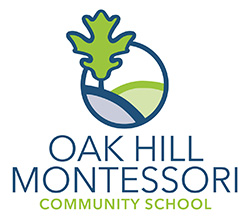Toddler Community
16 months to 35 months (ages are approximate)
Half-Day: 8:45am-11:45am | Full-Day: 8:45am-3:45pm
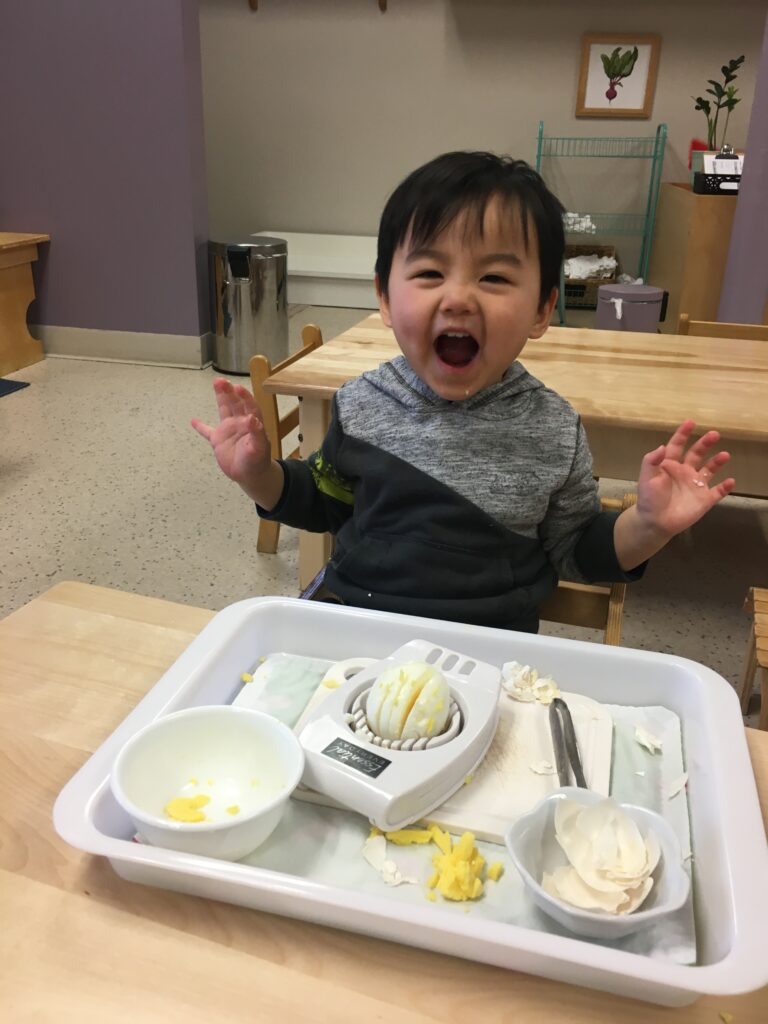
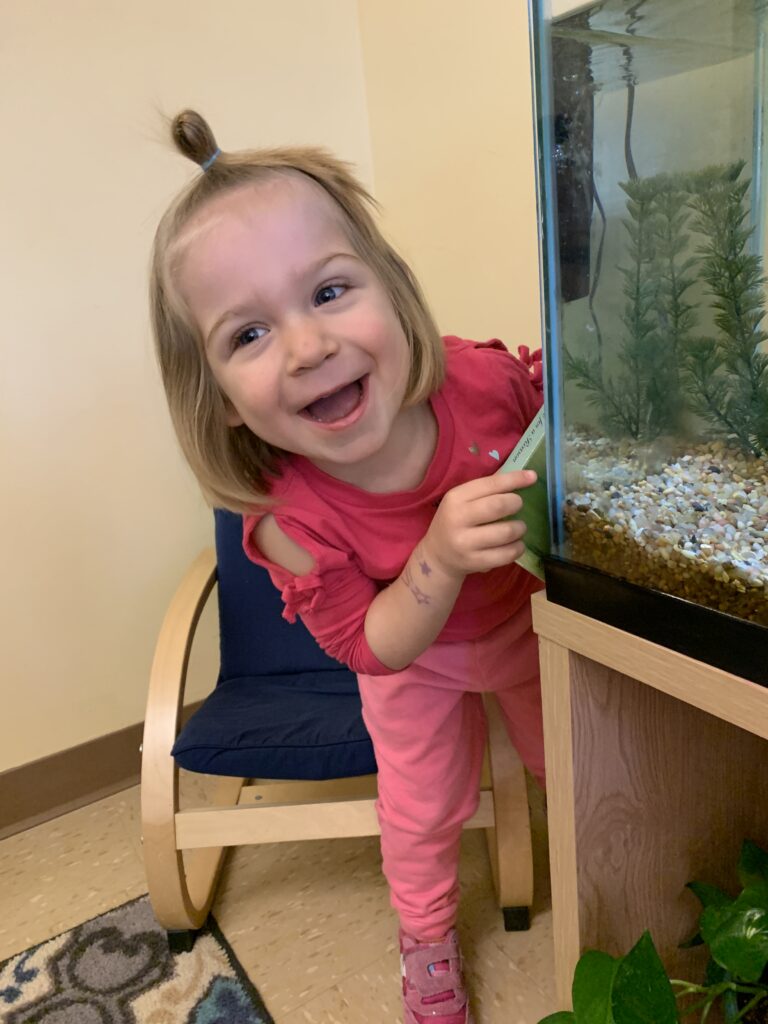
Level Overview
The Toddler Community is designed to allow children to remain in a familiar setting for the full day. The classroom is designed to be an extension of their home environment, providing a range of activities to serve the child’s developmental, physical and emotional needs. Children start with a three hour work cycle, followed by play outside in the outdoor environment created especially for them, lunch and then nap or rest time. The afternoon portion of the day follows a similar structure with more opportunities for play, learning and exploration.
Purpose and Goal
Our Toddler Community encourages, assists, and protects the normal development of each child. We seek to help the child follow his or her natural path of development in order to gain independence, to be motivated by natural curiosity, and to cultivate each child’s natural desire to learn. The children are assisted in developing fine motor skills, building academic/social confidence, and enhancing their language/vocabulary. We accomplish this through an appropriate balance of developmental ages within the classroom and the expert guidance of our trained instructors.
Classroom Structure
During the early years of life, Dr. Montessori believed that “the first thing the child’s education demands is the provision of an environment in which he or she can develop the powers given by nature.” At Oak Hill, toddlers are provided an opportunity to explore and learn freely within the classroom. All furniture and materials are carefully selected to meet the developmental needs of the young child. Those materials refine eye-hand coordination, attract the child’s interest and fulfill the child’s natural urge to explore the world. Gradually, the child lengthens his/her span of concentration.
As this is the most sensitive period for acquiring language, each child’s language is enriched through conversation, songs, and stories.
Children of this age have a biological necessity to move. The young child develops movement, independence, and concentration through practical life experiences such as watering plants, carrying chairs, or washing dishes. When it comes to meal time, children share the responsibilities of meal preparation, setting the table, and for cleaning up afterwards.
Children are encouraged and assisted in developing self-care skills such as dressing, undressing and using the toilet. Through their own observations, children often develop an interest in doing these tasks independently. Our toddlers take pride in doing things on their own and they are encouraged to reach their next level of independence, whenever they are ready.
Targeted outcomes at the completion of the Toddler level
- An ability to verbally describe not only objects, but feelings
- Knowledge of social etiquette and manners
- Understanding that we all have a role in our community
- A robust appetite for learning new facts and skills
- Strong independence in the area of toileting
Toddler tuition rates can be found here.
Children’s House (Pre-K & Kindergarten)
3 to 5 years
Half-Day: 8:45am-11:45am | Full-Day: 8:45am-3:45pm
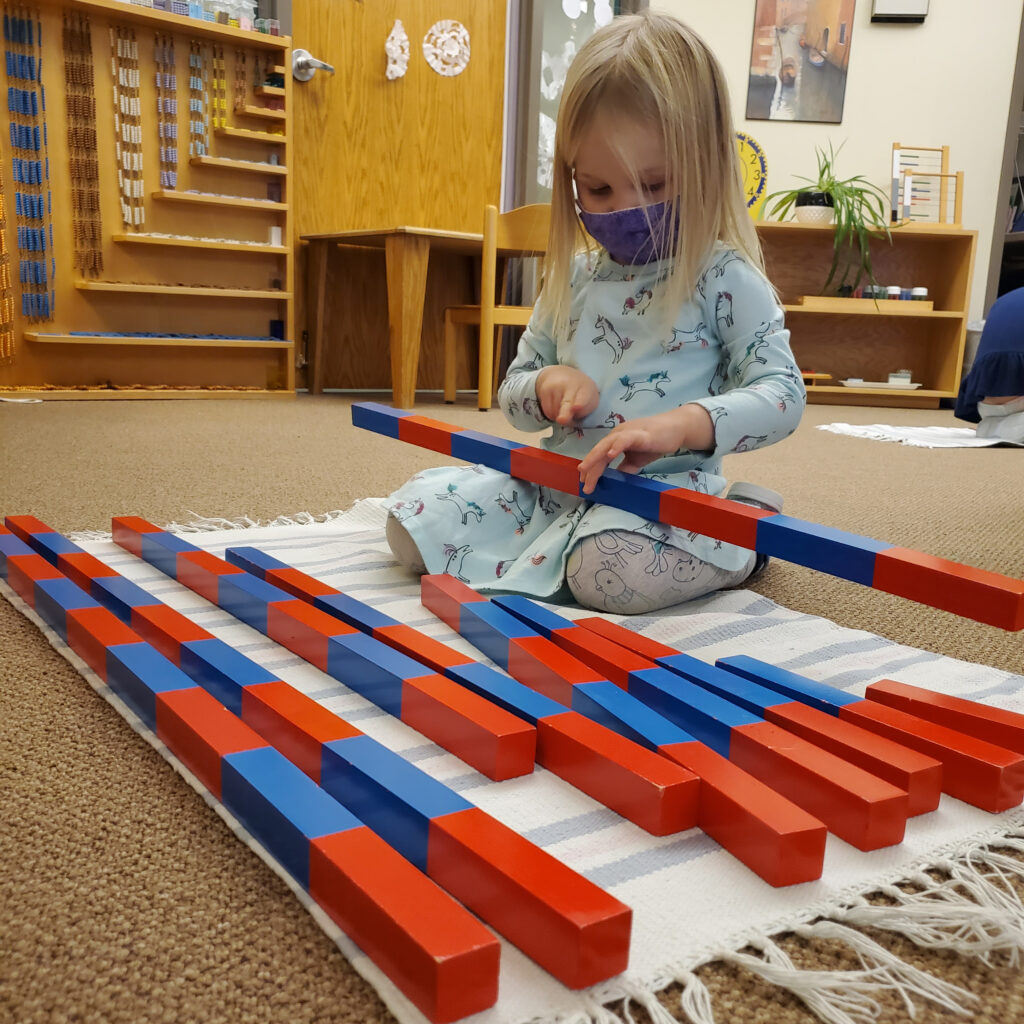
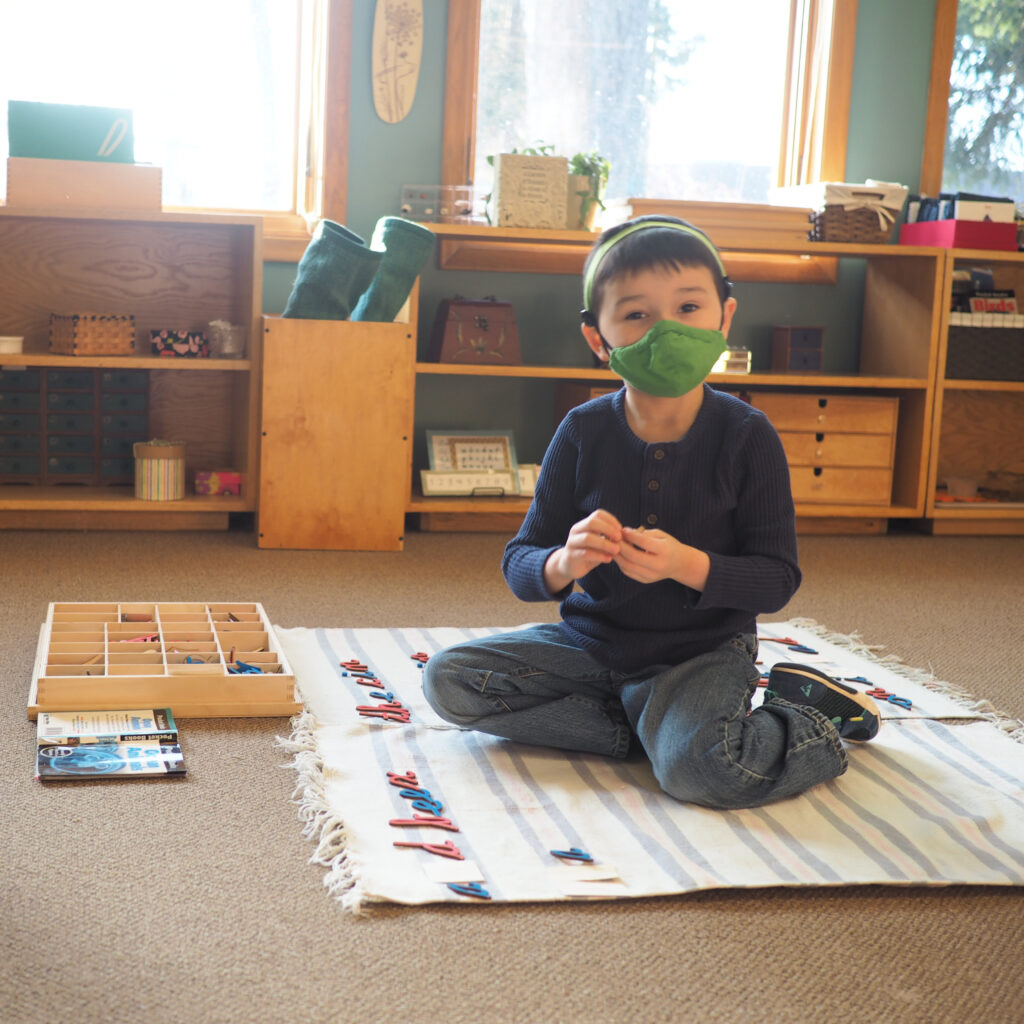
Level Overview
One of the unique aspects of the Children’s House level is the multi-year cycle. Children as young as three and as old as six are in the same room. At first glance, a Children’s House classroom can appear to an outsider as an unstructured environment with beehive-esque energy and activity. But when looked at more closely, that beehive is being driven by students doing their own work, after making their own choices. Some children may be working alone, others in pairs or groups. The classroom is designed to allow students to learn in the manner which best suits them.
Purpose and Goal
Dr. Montessori felt that the goal of early childhood education should not be to fill the child with facts from a pre-selected course of studies, but rather to cultivate the child’s own natural desire to learn, developing his/her own intellect and personality.
Classroom Structure
The Children’s House structure provides benefits to both the younger and older students alike. If a Kindergartener can help guide a younger classmate through his/her work, the younger student benefits from the social and educational interaction, while the older student reinforces his/her academic skill set and develops leadership skills. In this level, learning self-direction and self-worth is as important as academics.
Every bit of learning in the Children’s House room is essentially a puzzle. This objective is approached in two ways: first, by allowing each child to experience the excitement of learning by his/her own choice rather than by being led; and second, by helping the child perfect his/her natural tools for learning.
For example, let’s look at math. A child will first be shown numbers and beads which represent numbers. Over time, the student learns that those numbers can be manipulated, naturally leading to the beginnings of mathematical operations. When it comes to reading and writing, materials such as the moveable alphabet allows them to not only learn through repetition, but also by having a tactile and visual mechanism to see how words are created. Materials are also available for children to pursue their interests in topics such as geography, science/nature, and history.
All students in this level benefit from group activities. From discussions and recess to stories and songs, being together is an integral part of the day in Children’s House.
Targeted Outcomes for students after completing the Children’s House program
- Independent care of self
- Foundational knowledge of all four mathematical operations
- Phonetic understanding of reading and writing
- Understanding the basics of sentence structure
- Strong sense of who they are as people
- Consideration for fellow students and adults
Children’s House tuition rates can be found here.
